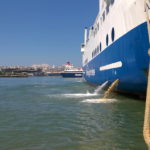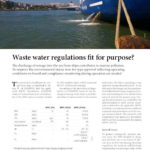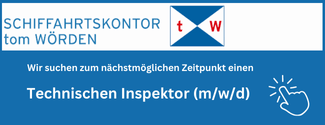The discharge of sewage into the sea from ships contributes to marine pollution. To improve the environmental status tests for type approval reflecting operating conditions on board and compliance monitoring during operation are needed
The prevention of pollution by sewage from ships is regulated in Annex IV of MARPOL and the applicable MEPC Resolutions[ds_preview]. MARPOL Annex IV entered into force on September 27th, 2003 and is currently ratified by 142 member states which represent 96.25% of the world tonnage.
According to the provisions in Regulation 11 of MARPOL Annex IV the discharge of sewage from ships is prohibited within 12 nautical miles to the nearest land unless the ship is operating a type approved sewage treatment plant. As an alternative the sewage can be comminuted and disinfected using an approved system and discharged to sea outside three nautical miles to the nearest coast. Sewage treatment plants are certified by the administration to meet certain standards as defined in the applicable MEPC Guidelines on implementation of effluent standards and performance tests for sewage treatment plants. The currently valid standard for type approval is Resolution MEPC.227(64) as amended by Resolution MEPC.284(70).
Special Areas
To protect ecologically sensitive marine areas the IMO decided to designate the Baltic Sea as an Annex IV Special Area in 2011 introducing discharge regulations for nutrients and discharge requirements for passenger ships while operating in a Special Area. When tested for type approval the sewage treatment plants must meet additional nitrogen and phosphorous removal standards as per MEPC.227(64) section 4.2. The discharge requirements for the Baltic Sea Special Area will take effect on:
• June 1st, 2019, for new passenger ships;
• June 1st, 2021, for existing passenger ships other than those specified in the paragraph below;
• 25.06.2019June 1st, 2023, for existing passenger ships en route directly to or from a port located outside the special area and to or from a port located east of longitude 28 10 E within the special area that do not make any other port calls within the special area;
As an alternative passenger ships always have the possibility to discharge their sewage in port reception facilities. This creates challenges for the Baltic ports, shipping companies and municipal wastewater treatment plants. The Federal Maritime and Hydrographic Agency of Germany (BSH) therefore commissioned a project on the development of a »Technical Guidance for the handling of wastewater in Ports of the Baltic Sea Special Area under MARPOL Annex IV«, which will provide information and guidance for involved parties and HELCOM member states. The Technical Guidance was developed by the Development and Assessment Institute in Waste Water Technology at RWTH Aachen University (PIA) and will be published by the HELCOM Secretariat after approval by the member states.
Revision of IMO Regulations
MARPOL Annex IV does not include requirements for the operation of sewage treatment plants. There are no operational performance standards for the effluent quality. In order to ensure that the performance of the systems during operation on board is satisfactory throughout their lifetime it was decided at the 71st meeting of MEPC to revise IMO Guideline MEPC.227(64). The decision was based on a proposal from Norway. The committee assigned the PPR Sub-Committee as the associated organ to complete the work.
Norway has been working together with relevant stakeholders in order to prepare a draft Guideline. The draft document (PRR 6/14) was submitted to PPR 6. In the annex to this document Norway has included proposed draft amendments to the Guidelines. To ensure that the performance of the sewage treatment systems remains satisfactory throughout the lifetime of the systems requirements for compliance and operation are mandatory. These are essential elements to prevent harmful discharges of sewage which may create hazards to the environment and human health.
Such requirements can only be regulated by MARPOL Annex IV and therefore Norway proposed to revise MARPOL Annex IV in parallel to the revision of the 2012 Guidelines (MEPC 74/14). During the last MEPC meeting the mandate was expanded by the revision of MARPOL Annex IV and associated guidelines to introduce provisions for record-keeping and measures to confirm the lifetime performance of sewage treatment plants.
Besides the Alaska Cruise Ship Program the EU regulations for inland passenger vessels can serve as good example to improve the performance on board. In addition, the German DIN Standards Committee Shipbuilding and Marine Technology (NSMT) in Hamburg established a working group for the development of a standard for waste water treatment on board of ships.
Challenges
To improve the marine environmental status all potential sources from shipping that contribute to the input of nutrients need to be taken into account. Nutrients lead to eutrophication, the major pressure on sensitive marine areas, especially the Baltic Sea.
As an example, the discharge of food waste can be mentioned. The annual load of nitrogen contained in the food waste corresponds to 52% of nitrogen from sewage. The load of phosphorus is approximately one-third compared to the load from sewage. Regulations for the discharge of food waste are contained in Annex V of MARPOL. Even within special areas, as for example the Baltic Sea, the discharge of comminuted food waste is allowed outside 12 nautical miles from the nearest land. With regard to reducing the nutrient input as a whole it is necessary that the requirements for the discharge of sewage and food waste need to be harmonized.
Another improvement to be made relates to the documentation of food waste discharges. Appendix 2 of MARPOL Annex V provides a standard form for a garbage record book. The liquid phase of dewatered food waste is often sent to grey water tanks or the sewage treatment system. This possibility is not mentioned in the garbage record book and makes food waste disappear on paper. If food waste is mixed with sewage and enters the sewage treatment plant the most stringent requirements of the MARPOL Annexes apply.
Markus Joswig, Thomas Nellesen


















